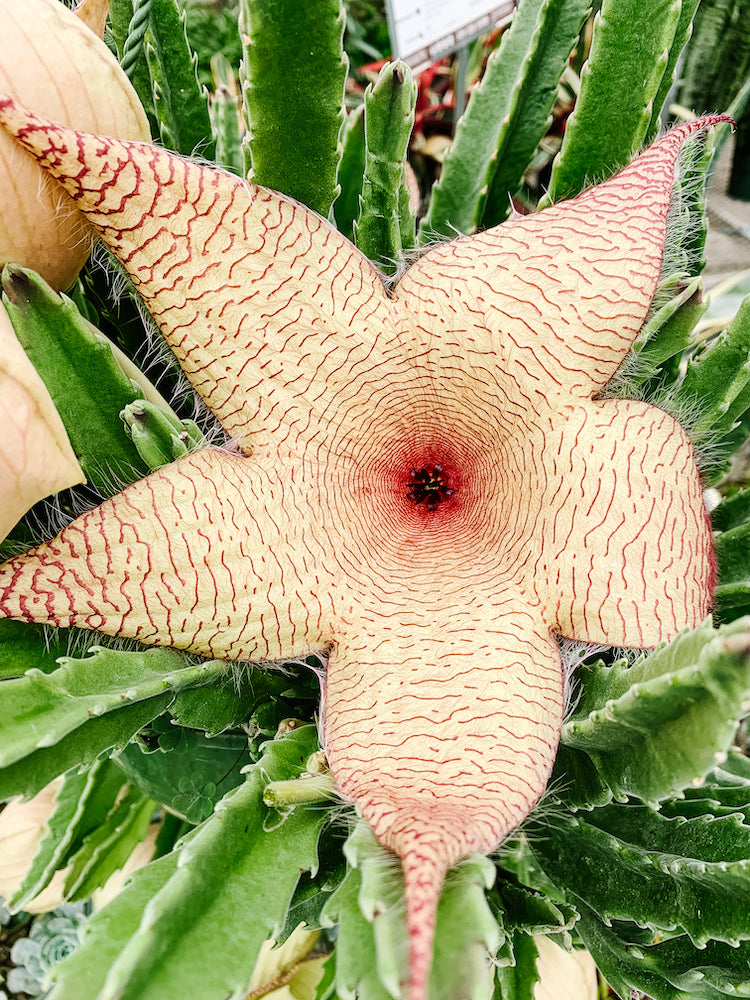The Starfish Cactus, known scientifically as Stapelia gigantea, is one of the most fascinating succulents you can encounter. With its stunning star-shaped flowers, which can measure up to a foot across, this plant not only captivates the eye but also piques the interest of botanists and casual gardeners alike. Native to the rocky terrains of southern Africa, particularly in countries like South Africa and Namibia, this remarkable cactus is an extraordinary addition to any collection.
The allure of the Starfish Cactus lies not only in its unique morphology but also in the intricate details surrounding its cultivation and care. Here, readers can explore the vast and varied realms of this spectacular plant, diving into its physical attributes, optimal growing conditions, and the significance of its signature blooms.
With the right care, your Starfish Cactus can flourish indoors or outdoors, provided its environmental needs are met. Let’s traverse the journey of understanding this stunning succulent!
Characteristics of the Starfish Cactus
At first glance, the Starfish Cactus might be mistaken for a less sophisticated flower. However, its distinctive star-shaped leaves radiate outwards, resembling an aquatic starfish, hence the name. The succulent leaves are thick, fleshy, and edged with small spines. These attributes not only provide a visual feast but also serve practical purposes.
The real spectacle comes during the blooming season when it produces large, captivating flowers that flaunt their unique petal structure. These blossoms are usually a mottled brown with deep maroon or yellow undertones. The flowers tend to emit a rather pungent odor, often likened to that of rotting meat. This scent acts as an attractant for pollinators, most notably carrion flies, which are drawn to the aroma, falling unwittingly into the plant’s reproductive strategy.
Understanding the unique morphology of the Starfish Cactus lends itself both to appreciation and cultivation. The plant’s growth can reach heights of up to twelve inches, making it an eye-catching centerpiece for displays or an intriguing addition to your succulent garden.
Optimal Growing Conditions for Your Starfish Cactus
To successfully cultivate a Starfish Cactus, it is imperative to replicate its native environment as closely as possible. This succulent prefers well-draining soil. A cactus-specific potting mix or a sandy, gritty blend will suit its root system perfectly. Adequate drainage is crucial; too much moisture can lead to root rot, which is detrimental to this succulent.
Light is another critical factor in the cultivation of the Starfish Cactus. It thrives in bright, indirect sunlight but can tolerate some direct sun exposure. Too little light can stifle growth and diminish flower production, while too much can scorch the delicate leaves. Indoor gardeners should consider placing their plants near a south-facing window or utilizing grow lights to ensure adequate illumination.
Temperature plays a role as well. The Starfish Cactus flourishes in warm environments, enjoying temperatures that hover between 70°F and 90°F (21°C to 32°C). This cactus is not frost-tolerant, so it’s essential to bring it indoors during colder months or provide it with sufficient protection if planted outside.
Watering practices also require careful consideration. During the active growing season, generally in spring and summer, a thorough watering schedule should be followed, allowing the soil to dry completely between waterings. However, in the dormant phase of fall and winter, the frequency should be considerably reduced to avoid over-saturation.
The Fascinating Lifecycle of the Starfish Cactus
The lifecycle of the Starfish Cactus is a miraculous journey from seed to adulthood. Germination typically occurs in well-draining soil under warm conditions. As they mature, they develop the characteristic star-shaped leaves, reaching their full potential at two to three years of age.
Once established, the plant prepares for blooming, usually during the late spring to early summer. Conditions must be ideal for flower formation—adequate light, warmth, and proper watering ensure they make their grand appearance. The flowers are not only visually stunning; they play a crucial role in the ecosystem as they attract specific pollinators. This cycle illustrates the intertwined relationship between flora and fauna, showcasing the importance of each species within its environment.
Creating the Perfect Environment for Blooms
For gardeners eager to see their Starfish Cactus bloom, fostering the right environment is essential. Proper fertilization practices can propel the plant towards blooming. A low-nitrogen fertilizer or a cactus-specific blend during the growing season can encourage robust health and vibrant flowers.
Fertilizers should be applied sparingly and always in diluted form, ideally during the active growth period, to avoid over-fertilization, which can damage the roots. Additionally, the use of organic amendments such as worm castings can enhance the soil quality without overwhelming the plant with nutrients.
In summary, the Starfish Cactus is more than just a visual marvel; it is a complex plant that requires attention to detail in its care and cultivation. By providing the right conditions—adequate light, proper drainage, and thoughtful watering—gardeners can enjoy the breathtaking beauty of its flowers, all while contributing to the life cycle of this remarkable succulent. Whether as a centerpiece in your home or as part of a larger collection, the Starfish Cactus is undoubtedly a testament to nature’s stunning creativity.





Leave a Comment